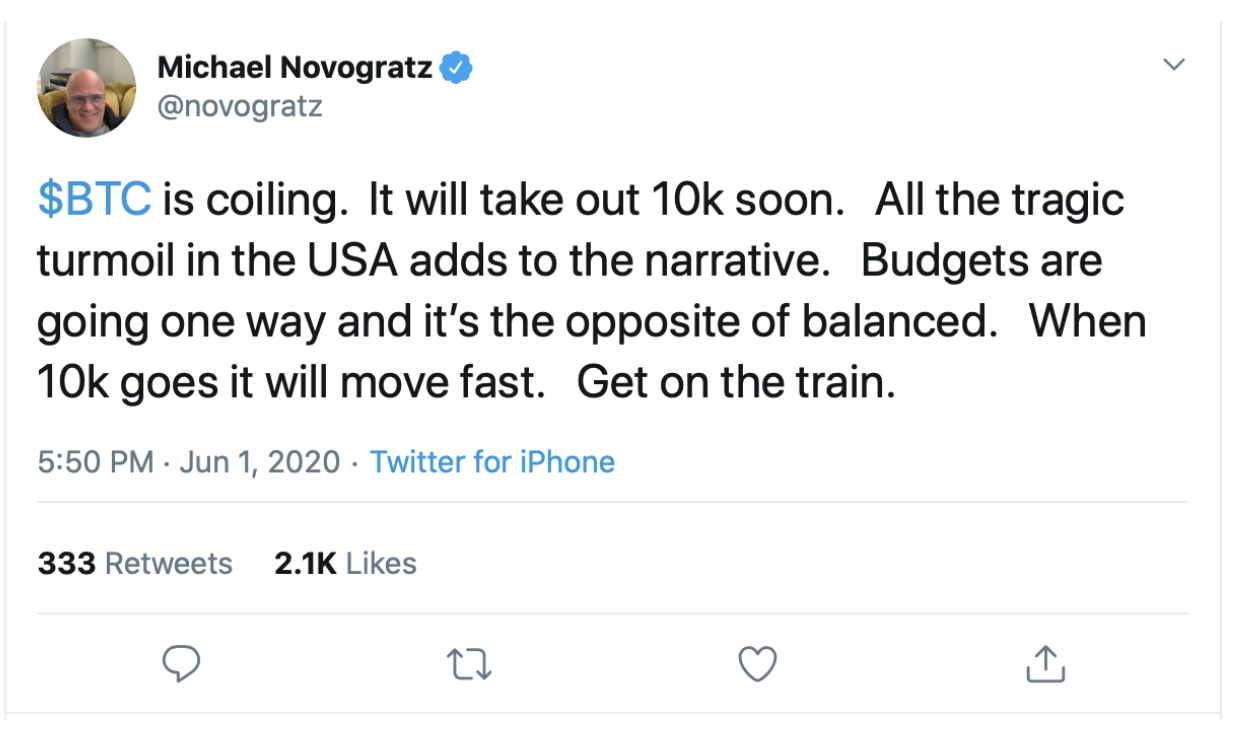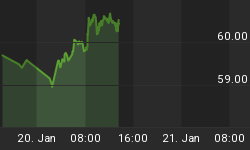Monday saw bitcoin pass the $10,000 level again, with the bulls calling a sustained rally, despite the fact that after topping $10,429 it had shed ~$1000 by late morning on Tuesday.
Still, the bulls are banking on a supply squeeze following the third halving of bitcoin on May 12th.
Right before bitcoin passed the $10,000 resistance mark, former Goldman Sachs partner Galaxy Digital’s Michael Novogratz noted that when the cryptocurrency hits that mark “it will move fast”, advising investors to scoop it up now.

Likewise, when the breakout started Monday, crypto strategist Josh Rager (72,000 Twitter followers) said bitcoin was about to make a hugely bullish move:

Slightly more subdued, Santiment, a crypto analytics platform, said it expected bitcoin to be robust, but with a short-term decline pushing to $11,000+ thereafter.

So what happens now that bitcoin has shed $1,000 since yesterday’s excitement?
The really abrupt decline started at around 10:45 ET Tuesday, when bitcoin was at $10,137 and then fell to $9,298 within five minutes and then regained a couple hundred dollars by 2:00 ET.
The $10,000 mark has consistently been one of key resistance for bitcoin for the past 12 months. Hitting this mark is one thing, but sustaining it is quite another.
That sudden surge in bitcoin on Monday led to over $133 million in buy liquidations (forced closures of short positions) on BitMEX, the crypto derivatives exchange. That was the biggest forced closure of shorts on BitMEX since October 2019, according to Skew analytics, via Coindesk. All told, more than $430 million in bitcoin shorts were closed Monday over all platforms.
Still, the bulls are not distraught because they truly believe in bitcoin’s status as a viable safe haven asset and a hedge against inflation.
It’s a messy game of predictions, though, for a digital “currency” that no one has a handle on.
Based on predictions, bitcoin could reach $400,000 by 2030 and be worth a whopping $8 trillion, or it could fall to zero. It’s hard to gauge when fundamentals are really about nothing more than FOMO--fear of missing out--though the recent halving of bitcoin suggested an actual fundamental at play in terms of supply.
Bitcoin launched in 2009, and the first halving took place in November 2012, with the second in July 2016. The third, which took place on May 12th was as much of a guessing game as the rest, and bitcoin will continue to fork until the ultimate number of bitcoins--21 million--are created.
Forking reduces the rewards to miners for minting coins by half, with the May 12th halving meaning that bitcoin’s annual inflation drops from 3.65% to 1.8%.
The first two halvings did not result in soaring bitcoin prices. In 2016, the halving initially saw bitcoin plunge from $1,100 to $600. It was only a year after this that it started to surge, eventually peaking at $19,783 in December 2018. In other words, playing the halving game requires patience.
The only real question is whether long-term patience is worth it.
Arguably, bitcoin was the best investment of the decade ending 2019. Indeed, the past decade has seen it jump from a few cents to $7,100 at year’s end. Entering 2020, bitcoin was among the leading gainers besides mounting global geopolitical and economic risks. And certainly it seems to be gaining on mass protests and riots rocking the United States right now.
It’s also notable that Germany’s largest lender, Deutsche Bank, suggests that cryptocurrencies could replace cash payments within the next decade, questioning the survival ability of our fiat currency-based monetary system.
This isn’t a bet on halving nearly as much as it is a hedge against the inflation of global turmoil.
By Michael Scott for Safehaven.com
More Top Reads From Safehaven.com:
















